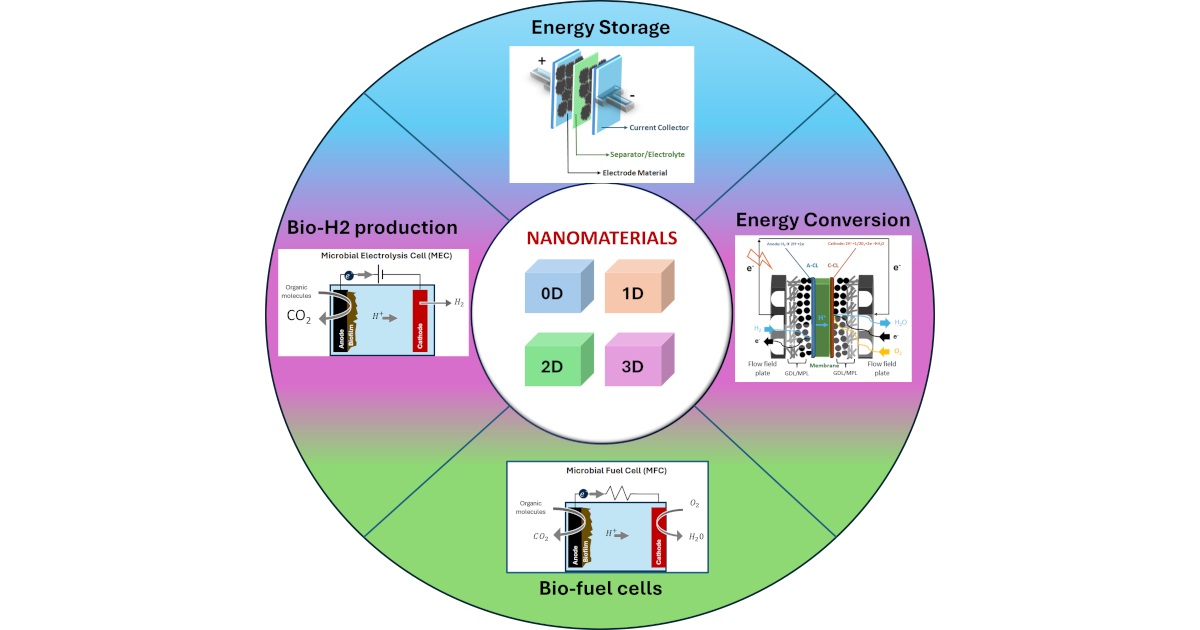- 4.3Impact Factor
- 9.2CiteScore
- 16 daysTime to First Decision
Nanomaterial-Based (Bio)Electrochemical Energy and Storage Systems
This special issue belongs to the section “Energy and Catalysis“.
Special Issue Information
Dear Colleagues,
Electrochemical energy storage and conversion (EESC) devices have received great interest due to their capability of protecting natural and human environments with challenges present in terms of materials and processes to implement them.
The employment of nanomaterials in (bio)electrochemical energy conversion and storage represents an intriguing and interesting area of academic and commercial research. Indeed, nanostructured materials, thanks to their inherent morphological properties, provide a high electroactive surface area that can enhance charge transfer mechanisms and energy storage capacity, with respect to bulk materials. The design of high-performance catalysts for energy storage and conversion frequently requires nanostructured materials. The employment of nanomaterials also turns out to be fundamental for the generation of new ion-exchange membranes.
This Special Issue entitled “Nanomaterial-Based (Bio)Electrochemical Energy and Storage Systems” aims to summarize the most recent progress and new developments in the design and utilization of nanomaterials for highly efficient, novel (bio)electrochemical energy production and storage.Dr. Giulia Massaglia
Dr. Marzia Quaglio
Guest Editors
Manuscript Submission Information
Manuscripts should be submitted online at www.mdpi.com by registering and logging in to this website. Once you are registered, click here to go to the submission form. Manuscripts can be submitted until the deadline. All submissions that pass pre-check are peer-reviewed. Accepted papers will be published continuously in the journal (as soon as accepted) and will be listed together on the special issue website. Research articles, review articles as well as short communications are invited. For planned papers, a title and short abstract (about 250 words) can be sent to the Editorial Office for assessment.
Submitted manuscripts should not have been published previously, nor be under consideration for publication elsewhere (except conference proceedings papers). All manuscripts are thoroughly refereed through a single-blind peer-review process. A guide for authors and other relevant information for submission of manuscripts is available on the Instructions for Authors page. Nanomaterials is an international peer-reviewed open access semimonthly journal published by MDPI.
Please visit the Instructions for Authors page before submitting a manuscript. The Article Processing Charge (APC) for publication in this open access journal is 2400 CHF (Swiss Francs). Submitted papers should be well formatted and use good English. Authors may use MDPI's English editing service prior to publication or during author revisions.
Keywords
- electrochemical systems
- energy storage devices
- bio electrochemical systems
- electrospun nanofibers synthesis and characterizations
- integration methods of nanomaterials into energy conversion devices
- electrode design for electrochemical energy conversion
- new technological approaches
- nanomaterials for sustainability

Benefits of Publishing in a Special Issue
- Ease of navigation: Grouping papers by topic helps scholars navigate broad scope journals more efficiently.
- Greater discoverability: Special Issues support the reach and impact of scientific research. Articles in Special Issues are more discoverable and cited more frequently.
- Expansion of research network: Special Issues facilitate connections among authors, fostering scientific collaborations.
- External promotion: Articles in Special Issues are often promoted through the journal's social media, increasing their visibility.
- e-Book format: Special Issues with more than 10 articles can be published as dedicated e-books, ensuring wide and rapid dissemination.

